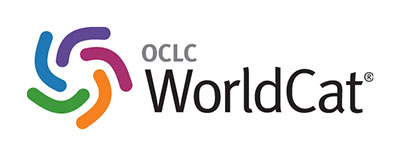Tratamiento restaurador atraumático: Eficacia clínica de ionómeros de vidrio en cavidades clase I
DOI:
https://doi.org/10.26871/killcanasalud.v5i1.820Resumen
La Técnica de Restauración Atraumática (TRA) es un procedimiento preventivo–restaurador
mínimamente invasivo, como alternativa de tratamiento para poblaciones vulnerables con
poco o nulo acceso a servicios de salud, que consiste en la remoción del tejido dentario cariado utilizando sólo instrumentos manuales y un material adhesivo de restauración: el ionómero
de vidrio de alta viscosidad debido a sus propiedades físicas y químicas, como la adhesión a
la estructura dental, la biocompatibilidad, la reacción de fraguado químico y el desarrollo y
la liberación de fluoruro, que le confieren características preventivas. Objetivo: Revisar la
evidencia sobre la eficacia clínica, mediante el desempeño clínico y la supervivencia de los
ionómeros en el tratamiento restaurador atraumático en dentición decidua. Métodos: Se realizó la búsqueda de información: estudios in vitro, ensayos clínicos aleatorizados y revisiones
sistemáticas con antigüedad máxima de 10 años, en las bases de datos Medline, Scielo y Scopus, con las estrategias de búsqueda (“Dental Atraumatic Restorative Treatment/therapeutic
use”[Mesh] OR “Dental Atraumatic Restorative Treatment/trends”[MesH] OR ART OR PRAT) y
((“Dental Atraumatic Restorative Treatment”[Mesh]) AND (“Glass Ionomer Cements”[Mesh])
OR “Ketac-Molar Quick” [Supplementary Concept]). Conclusiones: Existe evidencia científica
suficiente para determinar el éxito de las restauraciones TRA en lesiones de una superficie
en dentición decidua, incluso en comparación con los materiales restauradores de los tratamientos convencionales. El desempeño clínico y la supervivencia es alta cuando se utilizan ionómeros de alta viscosidad. Aún no hay consenso acerca de las ventajas del uso de ionómeros
de menor costo, encapsulados, reforzados con metal y/o con propiedades mejoradas.
Descargas
Citas
Ministerio de Salud. Prevalencia Nacional de caries dental, fluorosis del esmalte y
urgencia de tratamiento en escolares de 6 a 8, 10, 12 y 15 años. Perú. 2001 – 2002 – 2005.
Jurasic MM, Marianne Jurasic M, Gibson G, Wehler CJ, Orner MB, Jones JA. Caries
prevalence and associations with medications and medical comorbidities [Internet]. Vol. 79,
Journal of Public Health Dentistry. 2019. p. 34–43. Available from: http://dx.doi.org/10.1111/
jphd.12292
de Medeiros Serpa EB, Clementino MA, Granville-Garcia AF, Rosenblatt A. The effect
of atraumatic restorative treatment on adhesive restorations for dental caries in deciduous
molars. J Indian Soc Pedod Prev Dent. 2017 Apr;35(2):167–73.
Saber A, El-Housseiny A, Alamoudi N. Atraumatic Restorative Treatment and Interim
Therapeutic Restoration: A Review of the Literature [Internet]. Vol. 7, Dentistry Journal. 2019.
p. 28. Available from: http://dx.doi.org/10.3390/dj7010028
Frencken JE, van ’t Hof MA, van Amerongen WE, Holmgren CJ. Effectiveness of
Single-surface ART Restorations in the Permanent Dentition: A Meta-analysis [Internet]. Vol. 83, Journal of Dental Research. 2004. p. 120–3. Available from: http://dx.doi.
org/10.1177/154405910408300207
Estupiñán-Day S, Tellez M, Kaur S, Milner T, Solari A. Managing dental caries with
atraumatic restorative treatment in children: successful experience in three Latin American
countries. Rev Panam Salud Publica. 2013 Apr;33(4):237–43.
Navarro MF de L, Leal SC, Molina GF, Villena RS. Tratamento Restaurador Atraumático:
atualidades e perspectivas. Rev Assoc Paul Cir Dent. septiembre de 2015;69(3):289–301.
Holmgren CJ, Lo ECM, Hu D, Wan H. ART restorations and sealants placed in Chinese school children - results after three years [Internet]. Vol. 28, Community Dentistry
and Oral Epidemiology. 2000. p. 314–20. Available from: http://dx.doi.org/10.1034/j.1600-
2000.280410.x
da Franca C, Colares V, Van Amerongen E. Two-year evaluation of the atraumatic restorative treatment approach in primary molars class I and II restorations. Int J Paediatr Dent.
Jul;21(4):249–53.
Olegário IC, de Brito Pacheco AL, de Araújo MP, de Miranda Ladewig N, Bonifácio CC,
Imparato JCP, et al. Low-cost GICs reduce survival rate in occlusal ART restorations in primary
molars after one year: A RCT [Internet]. Vol. 57, Journal of Dentistry. 2017. p. 45–50. Available
from: http://dx.doi.org/10.1016/j.jdent.2016.12.006
Noor-Mohammed R, Basha S. Survival of Occlusal ART Restorations in Primary Molars Placed in School Environment and Hospital Dental Setup-One Year Follow-up Study [Internet].
Medicina Oral Patología Oral y Cirugia Bucal. 2011. p. e973–7. Available from: http://dx.doi.
org/10.4317/medoral.17327
Delgado-Angulo EK, Ortiz EB, Sánchez-Borjas PC. Análisis de supervivencia de sellantes y restauraciones ART realizados por estudiantes de pregrado [Internet]. Vol. 15, Revista Estomatológica Herediana. 2014. p. 119. Available from: http://dx.doi.org/10.20453/reh.
v15i2.1941
Hosoya Y, García-Godoy F. Bonding mechanism of Ketac-Molar Aplicap and Fuji IX GP
to enamel and dentin. Am J Dent. 1998 Oct;11(5):235–9.
Menne-Happ U, Ilie N. Effect of heat application on the mechanical behaviour of glass
ionomer cements [Internet]. Vol. 18, Clinical Oral Investigations. 2014. p. 643–50. Available
from: http://dx.doi.org/10.1007/s00784-013-1005-4
Frencken JE, Leal SC, Navarro MF. Twenty-five-year atraumatic restorative treatment
(ART) approach: a comprehensive overview. Clin Oral Investig. 2012 Oct;16(5):1337–46.
Araujo MP, Innes NP, Bonifácio CC, Hesse D, Olegário IC, Mendes FM, et al. Atraumatic
restorative treatment compared to the Hall Technique for occluso-proximal carious lesions in
primary molars; 36-month follow-up of a randomised control trial in a school setting. BMC Oral
Health. 2020 Nov 11;20(1):1–18.
Menezes-Silva, R., Velasco, S.R.M., Bastos, R.S. et al. Randomized clinical trial of class
II restoration in permanent teeth comparing ART with composite resin after 12 months. Clin
Oral Invest 23, 3623–3635 (2019). https://doi.org/10.1007/s00784-018-2787-1
Zanata RL, Fagundes TC, Freitas MCC de A, Lauris JRP, Navarro MF de L. Ten-year survival of ART restorations in permanent posterior teeth. Clin Oral Investig. 2011 Apr;15(2):265–71.
Frencken JE, Pilot T, Songpaisan Y, Phantumvanit P. Atraumatic restorative treatment
(ART): rationale, technique, and development. J Public Health Dent. 1996;56(3 Spec):135–40;
discussion 161–3.
Dye BA, Hsu K-LC, Afful J. Prevalence and Measurement of Dental Caries in Young
Children. Pediatr Dent. 2015 May;37(3):200–16.
Abbass MMS, Mahmoud SA, El Moshy S, Rady D, AbuBakr N, Radwan IA, et al. The prevalence of dental caries among Egyptian children and adolescences and its association with
age, socioeconomic status, dietary habits and other risk factors. A cross-sectional study.
F1000Res. 2019 Jan 3;8:8.
Hesse D, de Araujo MP, Olegário IC, Innes N, Raggio DP, Bonifácio CC. Atraumatic Restorative Treatment compared to the Hall Technique for occluso-proximal cavities in primary
molars: study protocol for a randomized controlled trial. Trials. 2016 Mar 31;17:169.
Hilgert LA, de Amorim RG, Leal SC, Mulder J, Creugers NHJ, Frencken JE. Is high-viscosity glass-ionomer-cement a successor to amalgam for treating primary molars? Dent Mater. 2014 Oct;30(10):1172–8.
Frencken JEFM, Flohil KA, de Baat C. [The history and scientific development of atraumatic restorative treatment]. Ned Tijdschr Tandheelkd. 2013 Dec;120(12):677–81.
Luengas-Quintero E, Frencken JE, Muñúzuri-Hernández JA, Mulder J. The atraumatic
restorative treatment (ART) strategy in Mexico: two-years follow up of ART sealants and restorations. BMC Oral Health. 2013 Sep 8;13:42.
van Gemert-Schriks MCM, van Amerongen WE, ten Cate JM, Aartman IHA. Three-year
survival of single- and two-surface ART restorations in a high-caries child population. Clin Oral
Investig. 2007 Dec;11(4):337–43.
Anna Luisa de Brito P, Isabel Cristina O, Clarissa Calil B, Ana Flávia Bissoto C, José
Carlos Pettorossi I, Daniela Prócida R. One year Survival Rate of Ketac Molar versus Vitro Molar
for Occlusoproximal ART Restorations: a RCT. Braz Oral Res. 2017 Nov 6;31:e88.
Lo EC, Holmgren CJ. Provision of Atraumatic Restorative Treatment (ART) restorations
to Chinese pre-school children--a 30-month evaluation. Int J Paediatr Dent. 2001 Jan;11(1):3–
de Amorim RG, Leal SC, Frencken JE. Survival of atraumatic restorative treatment
(ART) sealants and restorations: a meta-analysis. Clin Oral Investig. 2012 Apr;16(2):429–41.
Honkala E, Behbehani J, Ibricevic H, Kerosuo E, Al-Jame G. The atraumatic restorative
treatment (ART) approach to restoring primary teeth in a standard dental clinic. Int J Paediatr
Dent. 2003 May;13(3):172–9.
Faustino-Silva DD, Figueiredo MC. Atraumatic restorative treatment-ART in early childhood caries in babies: 4 years of randomized clinical trial. Clin Oral Investig. 2019
Oct;23(10):3721–9.
Freitas MCC de A, Fagundes TC, Modena KC da S, Cardia GS, Navarro MF de L. Randomized clinical trial of encapsulated and hand-mixed glass-ionomer ART restorations: one-year
follow-up. J Appl Oral Sci [Internet]. 2018 Jan 18 [cited 2021 Aug 14];26. Available from: http://
www.scielo.br/j/jaos/a/wkvmgDxKRMxL4kbZ8tYQ43y/?lang=en&format=pdf
Mickenautsch S, Yengopal V. Failure Rate of Direct High-Viscosity Glass-Ionomer Versus Hybrid Resin Composite Restorations in Posterior Permanent Teeth - a Systematic Review.
Open Dent J. 2015 Dec 22;9:438–48.
Mobarak E, El-Deeb H, Daifalla LE, Ghaly M, Mustafa M, Sabry D, et al. Survival of multiple-surface ART restorations using a zinc-reinforced glass-ionomer restorative after 2 years:
A randomized triple-blind clinical trial. Dent Mater. 2019 Sep;35(9):e185–92.
Moura MS de, Sousa GP de, Brito MHSF, Silva MCC, Lima M de DM de, Moura L de FA
de D, et al. Does low-cost GIC have the same survival rate as high-viscosity GIC in atraumatic
restorative treatments? A RCT. Braz Oral Res. 2020 Jan 24;33:e125.
D’Costa VG, Singhal DK, Acharya S. Efficacy of GC Gold Label 9 and GC Miracle Mix®
Restorations using Atraumatic Restorative Treatment (ART) in Rural Settings: A Randomized
Controlled Trial. J Clin Pediatr Dent. 2020 Jan 1;44(3):148–53









